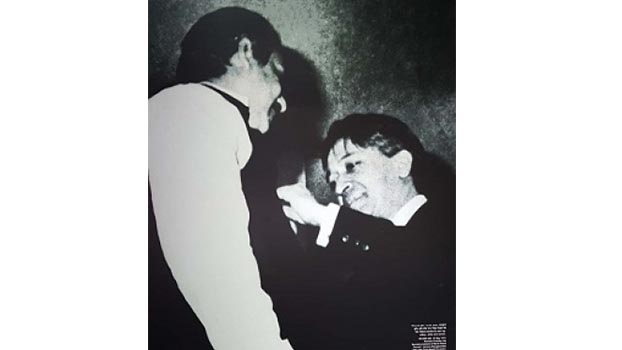Peace and Bangabandhu


Nadeem Qadir
It was not surprising when Father of the Nation Bangabandhu Sheikh Mujibur Rahman was awarded the prestigious Julio Curie Peace Prize by the World Peace Council (WPC) on this day 47 years ago, as all through his life his politics upheld the light of peace.
The World Peace Council (WPC), a non-governmental organisation, has awarded a number of prizes from 1950 to eminent world personalities. It was initially known as the International Peace Prize and then renamed Juliot-Curie Medal of Peace in 1959 after the death of this celebrated physicist.
In conferring the award, the WPC said that Bangabandhu was a symbol of peace.
His diaries, published in book format, clearly show his thought of achieving his goals in a non-violent way and his worries whenever there was any violence between the Bengalis and the Pakistani junta.
The very birth of Bangladesh was envisioned by him several decades earlier than it became a reality.
His six-point plan of uplifting the fate of the Bengalis, which was booted down for years by the Pakistanis in Karachi and later Islamabad, has nothing but a peaceful separation of east, the current Bangladesh, from the former west Pakistan.
Bangabandhu pushed a new political format where violence had no place and he exactly knew when to go for action – only in self-defence.
Bangabandhu spent his whole life to ensure people’s economic emancipation and build a ‘Sonar Bangla’ free from all sorts of hunger, poverty, illiteracy and exploitation.
Let us have a look at his six-point charter of demands as it is considered by historian a milestone of a roadmap for an eventual independent Bangladesh.
1. The Constitution should provide for a Federation of Pakistan in its true sense and the parliamentary form of government with supremacy of a Legislature directly elected on the basis of universal adult franchise.
2. The federal government should deal with only two subjects -- Defence and Foreign Affairs -- and all other residual subjects should be vested in the federating states.
3. Two separate, but freely convertible currencies for two wings should be introduced; or if this is not feasible, there should be one currency for the whole country, but effective constitutional provisions should be introduced to stop the flight of capital from East to West Pakistan. Furthermore, a separate Banking Reserve should be established and separate fiscal and monetary policy be adopted for East Pakistan.
4. The power of taxation and revenue collection should be vested in the federating units and the federal centre would have no such power. The federation would be entitled to a share in the state taxes to meet its expenditures.
5. There should be two separate accounts for the foreign exchange earnings of the two wings; the foreign exchange requirements of the federal government should be met by the two wings equally or in a ratio to be fixed; indigenous products should move free of duty between the two wings, and the constitution should empower the units to establish trade links with foreign countries.
6. East Pakistan should have a separate military or paramilitary force, and Navy headquarters should be in East Pakistan.
It was presented in 1966 to the Pakistani in Lahore. The Pakistanis rejected it immediately possibly because they understood it was indeed a ‘peaceful’ roadmap to an independent Bangladesh veiled by Bangabandhu’s demand for autonomy.
Although Bangabandhu carried out talks with Pakistani leaders, including late Pakistani leader Zulfikar Ali Bhutto, till the last for peaceful upholding the rights of the Bengalis and allow the vote of the Bengalis be honoured.
Bhutto and Pakistani President General Yahya Khan were caught in a dilemma after Bangabandhu won a landslide in the 1970 national polls and constitutionally he was the Pakistani prime minister-elect.
These two Pakistani leaders underestimated Bangabandhu as a man, as a political leader and his charismatic hold on his people – us, the Bengalis.
They feared that allowing Bangabandhu to become Pakistan’s prime minister will be a risk to a ‘united’ Pakistan as Bangabandhu would slowly implement the six-point charter of demands. If he could do that, East Pakistan will secede to become independent Bangladesh.
Thus the six-point was a ‘peaceful’ roadmap to an independent Bangladesh in the name of autonomy.
By February, the word ‘Bangladesh’ became popular along with Joy Bangla, while on 2 March 1971, Bangabandhu unfurled the Bangladesh flag – red, green and yellow map of East Pakistan, the future Bangladesh.
All through Bangabandhu appealed to the Pakistani to stop killing Bengalis, who had taken to the streets seeking their basic rights and Sheikh Mujibur Rahman be allowed to take charge as the prime minister of Pakistan.
Thus the Pakistanis, fearing the birth of an independent Bangladesh, broke peace to unleash a bloody attack codenamed ‘Operation Searchlight’ on unarmed Bengalis. It is one of history’s worst genocides that left three million Bengalis killed and at least 25,000 women raped during the nine-month War of Liberation of 1971.
Soon after returning home from a Pakistani jail, Bangabandhu repeatedly appealed to all not to resort to any vengeance against those who collaborated with the Pakistani Army, in particular the Urdu-speaking Biharis, and allow law to bring them to justice.
He could not bring the big war criminals to justice, but trial of Bengali collaborators had started before he was assassinated in 1975.
His worthy daughter, Prime Minister Sheikh Hasina, however, brought big war criminals to justice and tried them in a conventional way, which was acclaimed globally.
-- Nadeem Qadir is a UN Dag Hammarskjold Fellow and a senior journalist



